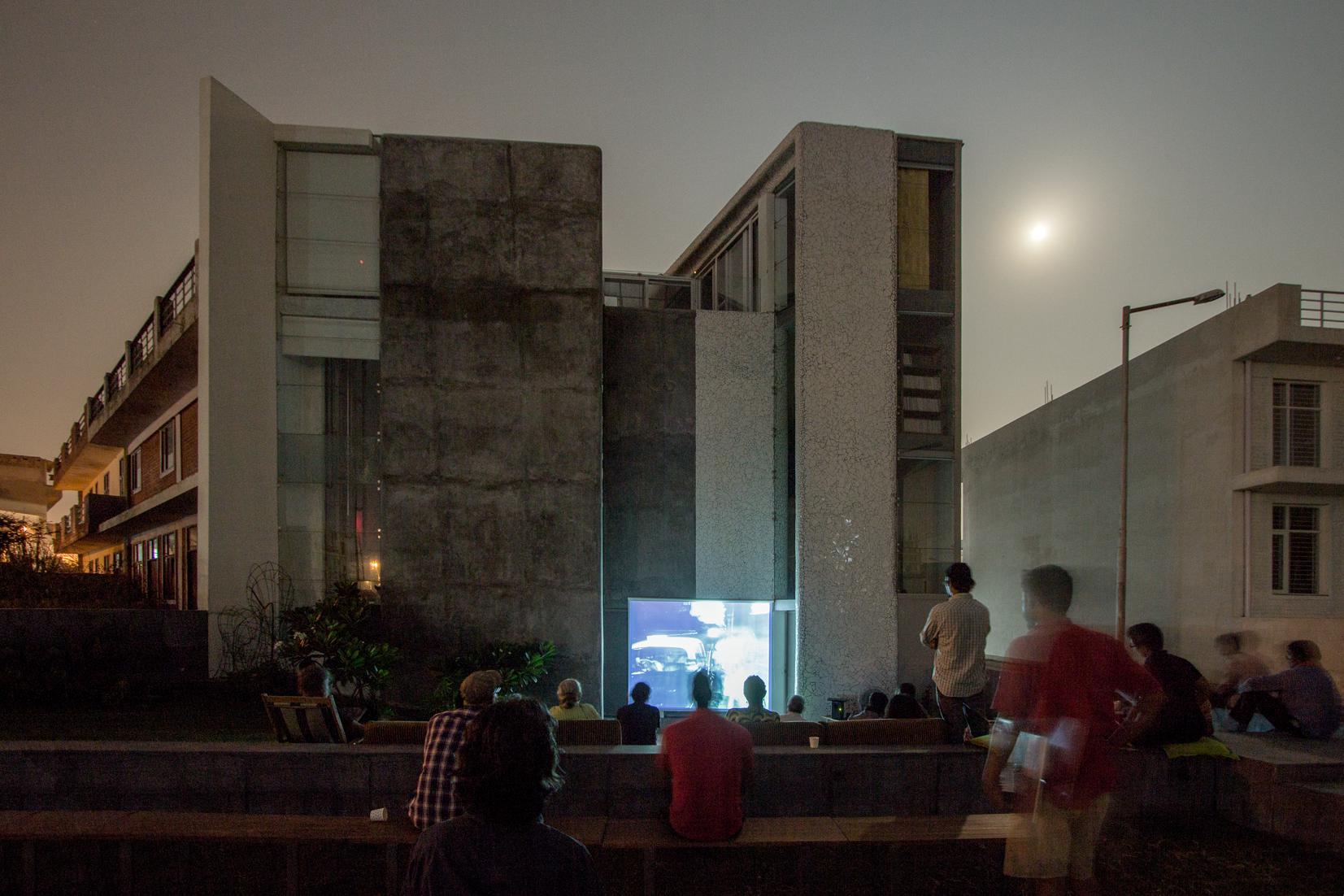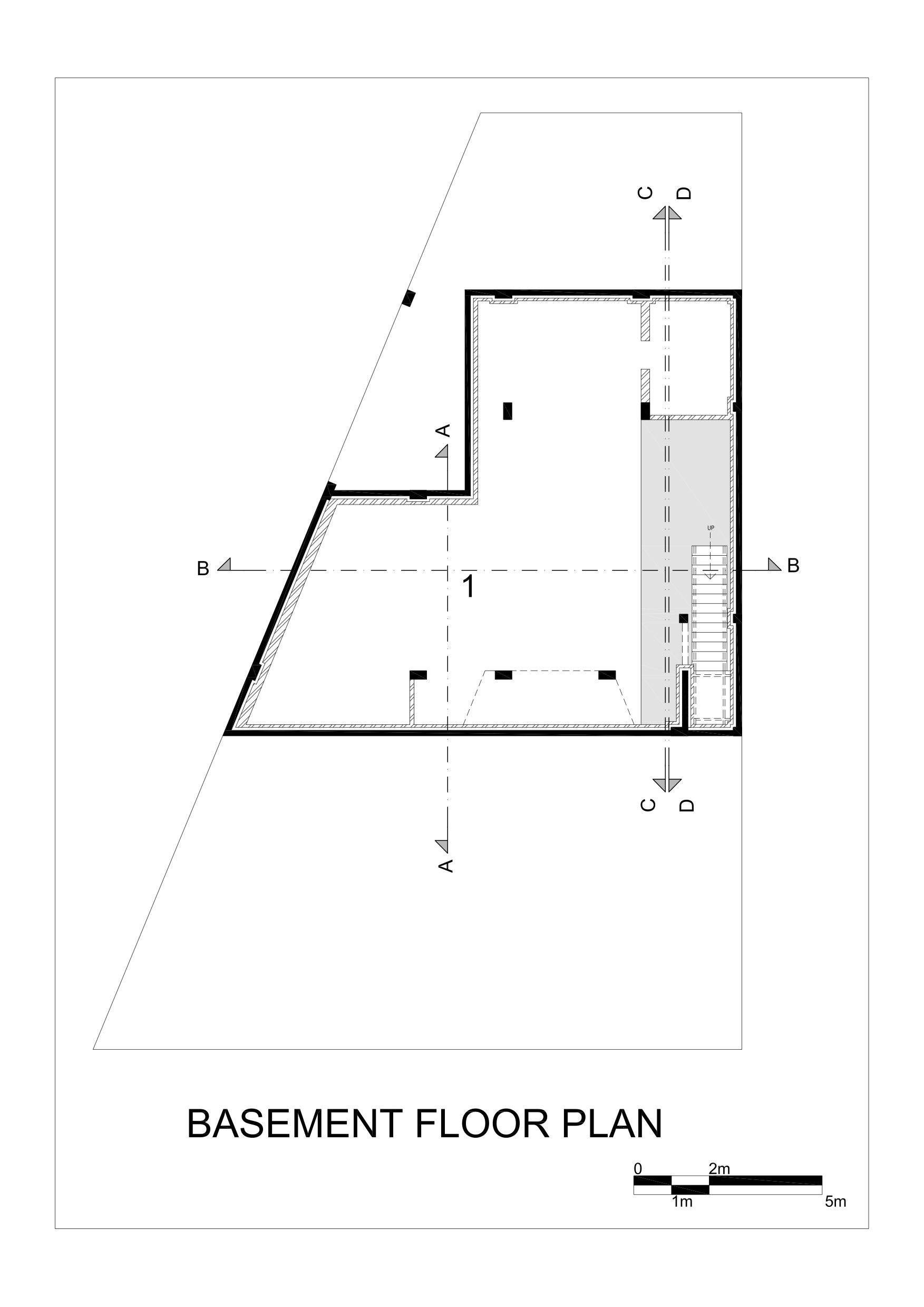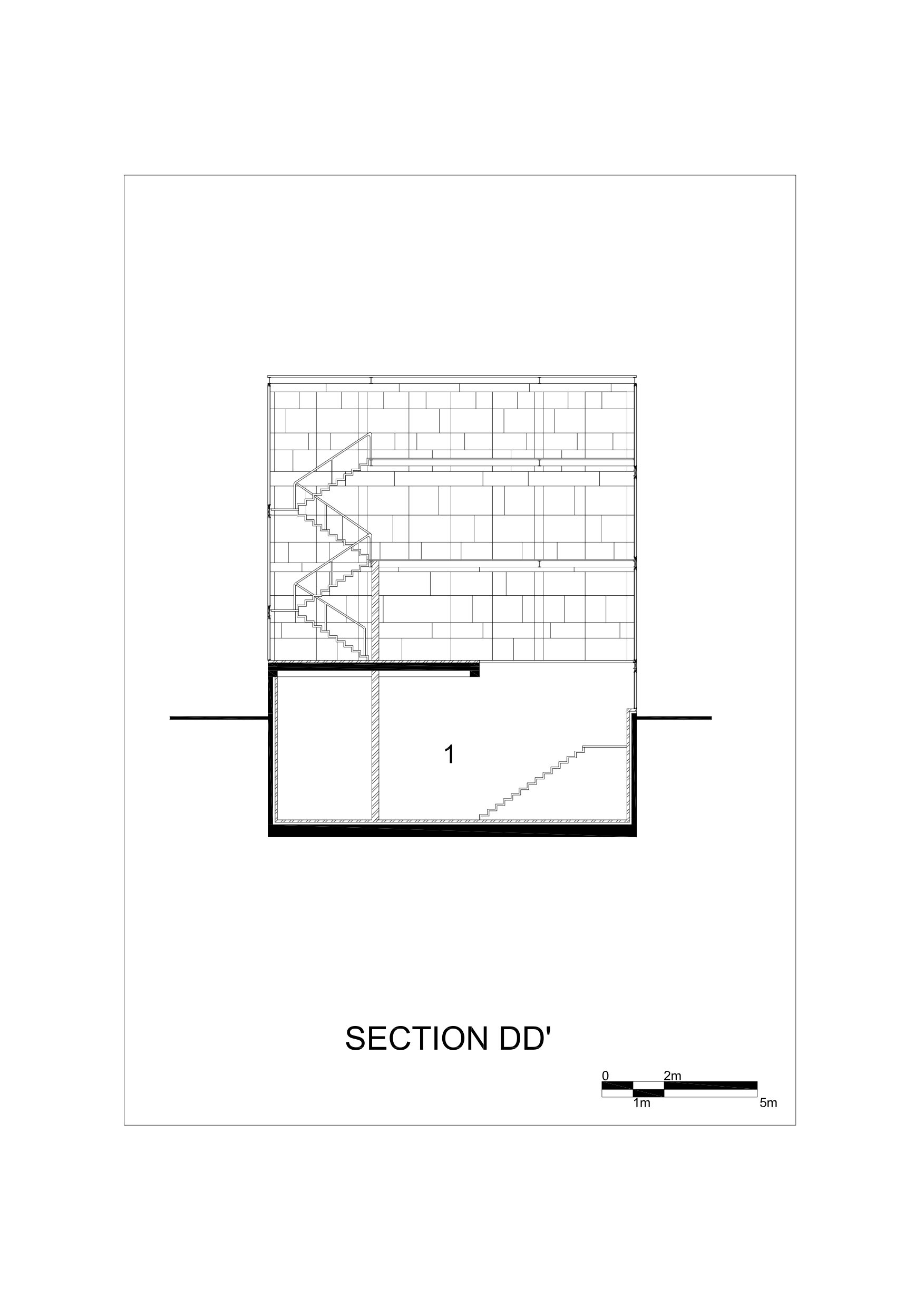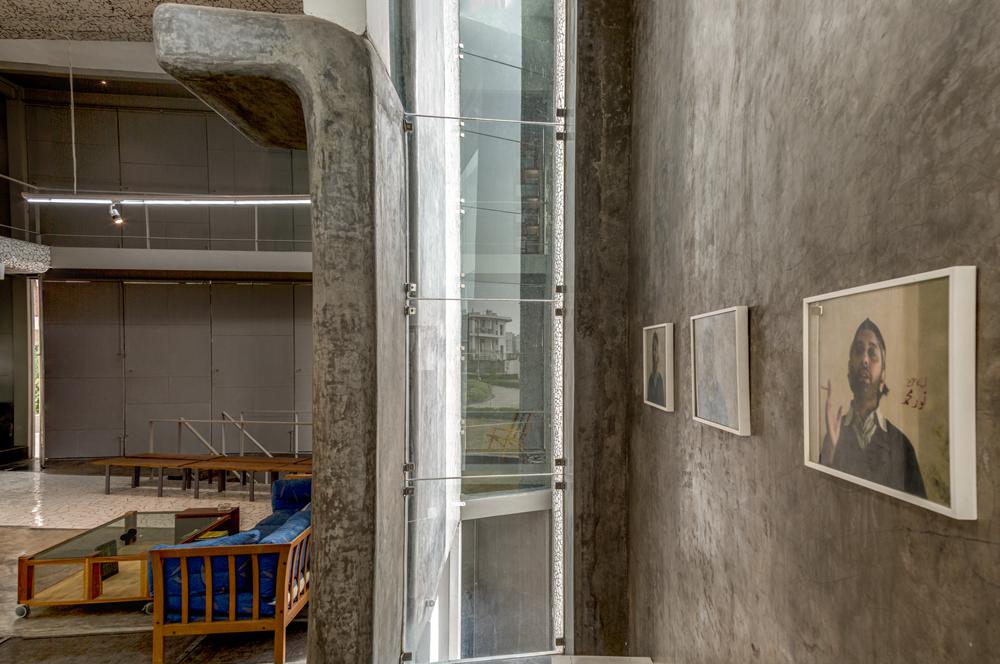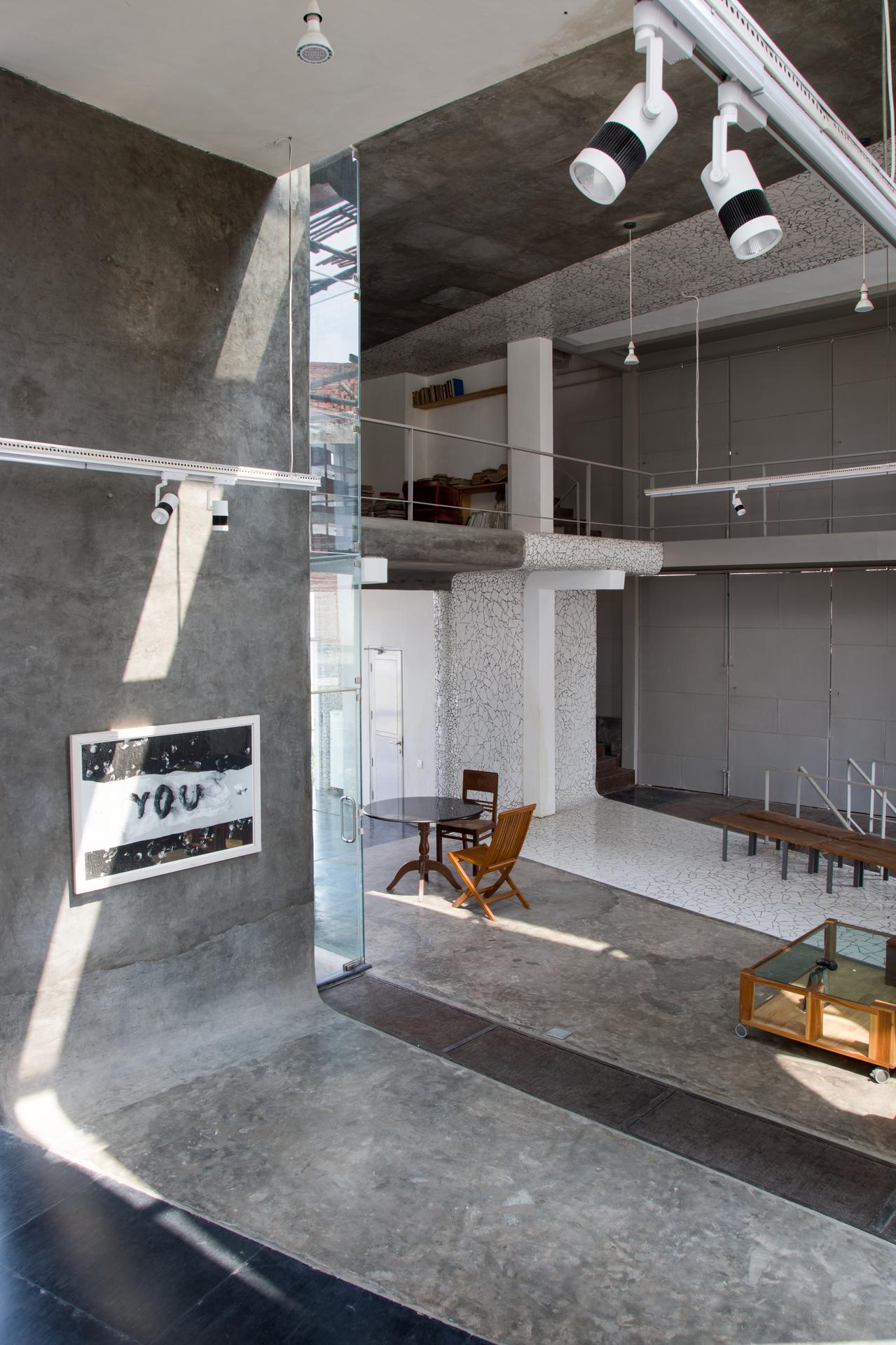Brief:
Artrovert is our project to design a studio in a peri-urban artists’ colony, Kaladham, in Greater Noida, Uttar Pradesh. The 280 sqm. studio is built on a 300 sqm trapezoidal plot which is one of 216 arranged in an octagonal grid. Our client-collaborator is a multi-media artist whose politically charged works interrogate binaries, challenge representation and explore the anti-aesthetic.Equally unconventionally, her vision for her studio was not the typical introverted artist’s “cave” but rather an extroverted residency where the creation of art and the living of the artist are shared with her precinct. Acutely aware of Kaladham’s location at the urban edge, she hopes such an outward expression and blurring of territory would lay seeds of well-knit social networks for a growing community.
Program
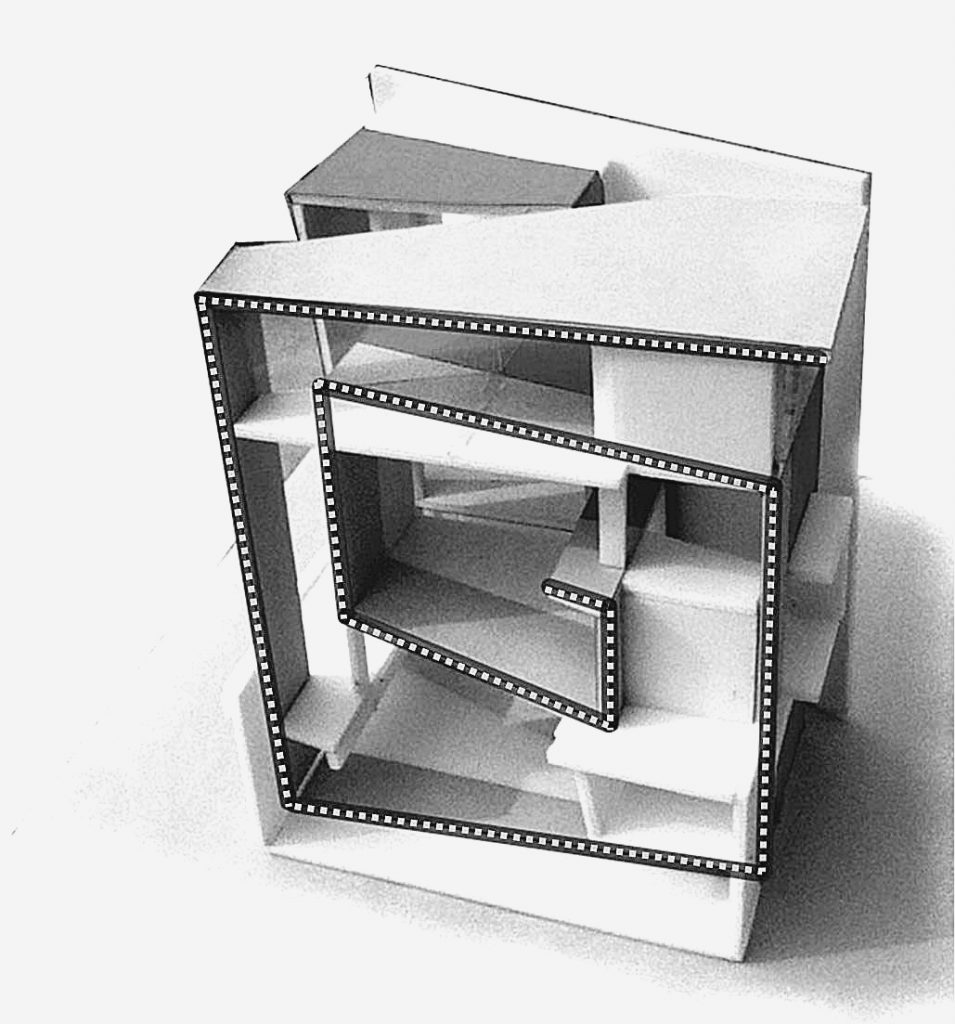
The studio required accessible, large volume workspaces that would invite an immersive experience of art and yet be rugged enough to withstand its production. A mezzanine study overlooking the studio provides a vantage point to view as well as to reflect. The top floor is designed as a two room residence for artists for short duration stay while a small ground floor residence at the back houses studio helpers. While a private garden is planned at the back as a spill-out for the helpers, a sloping, faceted front lawn is opened up for theatre-style public screenings and talks. The rooftop residence is arranged around a generous terrace.
Form and Materiality
The form articulates the creation of space as an unraveling rather than as a construction, revealing as much as concealing. Two materially-contrasting yet filial bands ( of distressed concrete and ceramic mosaic) loop and coil forming the various spaces of the program across multiple levels. These are book-ended on one side by the neighbour’s wall and with a grey steel armature on the other. The armature itself is designed to act simultaneously as a gallery, working scaffolding and circulation space as well as to provide views of the exhibits within from different heights. The panels are detailed to swivel so that the finished art on them may be turned outwards and shared publicly. This also creates the possibility of an externally created mural being turned inward for viewing as a composition of individual panels and multiple permutations of such arrangements.
Tall and narrow interstices are glazed against the outside while vertical slits cut through the internal volumes. Thus the design hopes to offer multiple views and varying perspectives through a multilevel space formed as a conversation between binaries.
Performance:
Passive thermal performance is at the heart of the architecture. The slits within the tall volumes vent air heated through thermal stacking while the massive floors and walls shade against solar heat gain during the warmest time of the summer day.

The low slung winter sun however penetrates the south-west facing studio warming the workspaces and rooftop terrace. The swivelling panels act as louvres that let in the easterly monsoon breeze decreasing internal humidity levels. The studio thus maintains comfortable thermal levels throughout the year.





